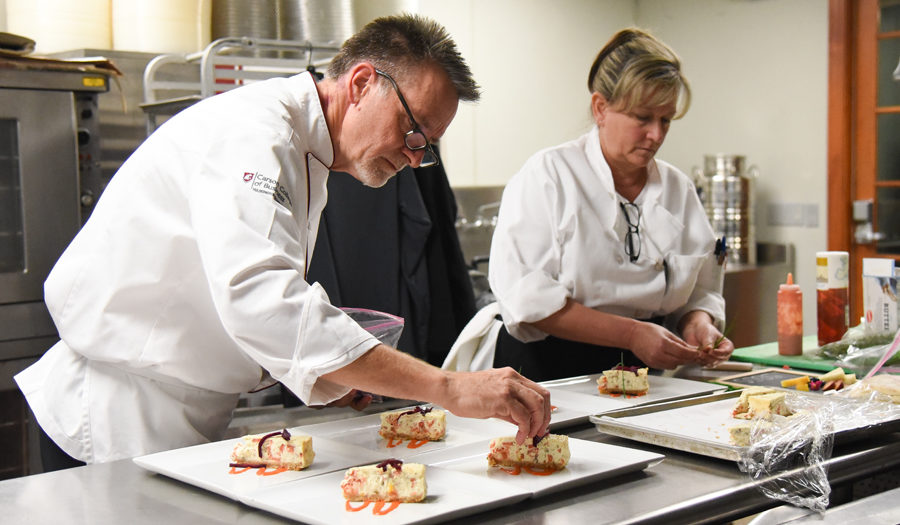
Home » Improve customer satisfaction, sales with right beverage, wine list
Improve customer satisfaction, sales with right beverage, wine list

March 13, 2019
By Robert Harrington
A cohesive and well-researched strategy for a wine and
beverage list is a key component of a successful restaurant, bar or tasting
room.
This approach entails defining and assessing competitors,
identifying targeted customers and what sort of menu approach is likely to be
most successful. Once these aspects are identified, better decisions can be
made to determine list size, variety, organization, layout, etc.
The first step in this part of the process is to define
the criteria for identifying direct competitors. Three main criteria that I
usually use are location (those similar to us in a relatively close proximity),
same type of business or industry segment and those with similar prices and
offerings.

In terms of location, the distance that will define a
competitor may vary by type of establishment (for instance, the distance for a
competitor in the limited service segment will be narrower than if you compete
in fine-dining segment, as customers are more willing to travel longer
distances).
Once you have identified your logical direct competitors,
assess the following:
• Who is coming to the restaurant/bar?
• Was the restaurant/bar full?
• Is the menu interesting?
• Is the food and beverage quality excellent?
• How do the menu/wine menu prices compare?
• What does this place do well and what are the main
deficiencies?
• What are their hours of operation, number of seats,
menu prices, menu type/size, menu presentation and menu variety?
After this step, you will have a better idea of the
strengths/weaknesses of your competitions’ beverage offerings; menu pricing
practices; the types of consumers they attract; types of beverages likely to be
must-haves; and the types of beverages will create uniqueness for your
establishment to drive traffic and profits.
A second aspect to determine before developing a beverage
list/menu is defining your primary, secondary and tertiary markets. This can be
done in several ways, such as traditional demographics (age, gender, income,
education, etc.), lifestyle characteristics (for example, a recent study
defined wine groups into six categories — given that the majority of consumers
drink wine, beer and spirits, these descriptors are likely to apply), or by
consumption patterns/preferences for beverages, as well as visit purpose
(business, leisure, special occasion, events, etc.).
If using the following six wine group categories (or other groupings), you will want to determine if your primary focus is on a small number of these groups or do you want to try to have enough options to meet the needs of all six groups. Or do you run the risk of being “stuck in the middle” and not fully meeting the needs of any one group? Here are the six categories:
• Engaged Explorers:younger population, frequent wine drinkers and highest spenders who enjoy broad repertoire of wine styles/regions and new wine experiences.
• Premium Brand Suburbans: frequent wine drinkers but
mid/older age who are the lowest spenders per bottle, stick to the wines they
know but have high wine knowledge.
• Contented Treaters: mid/older aged; affluent drinkers
and high spenders, but less frequent drinkers. They’re knowledgeable and
involved, enjoy broad range and influenced by wine origin.
• Social Newbies: youngest segment; drink wine about
twice a week, mid-spenders with wine not integrated into their lifestyle.
Limited knowledge; rely on recommendations.
• Senior Bargain Hunters: least frequent/oldest segments;
relatively strong knowledge but purchase narrow repertoire/value driven.
• Kitchen Casuals: oldest/infrequent drinkers, few
consuming wine on premise; limited interest in the wine category, sticking to
narrow range of wines they know. (Source: Perrett 2018. Wine Consumer
Segmentation Portraits. Wine Intelligence.)
Once you have completed the process of articulating your
target audience and have identified competitors, the beverage menu development
team will be better able to articulate what beverage selections should be
included? How does this appeal to our targeted consumers? How will the beverage
list make us unique compared to competitors? And, what beverage trends need to
be considered when formulating our list?
This initial thought process should assist in defining type of menu, size, pricing strategy within the confines of your establishment’s reputation and creating a fit with its reputation and resources (staff capabilities, space available, etc.) and the competitive environment in which you operate.
Robert Harrington is academic director for the Carson College of Business and professor in School of Hospitality Business Management at Washington State University Tri-Cities in Richland. He is the author of the book, “Food and Wine Pairing: A Sensory Experience” and a frequent author of research in the areas of hospitality and wine business.
Local News Hospitality & Meetings
KEYWORDS march 2019





